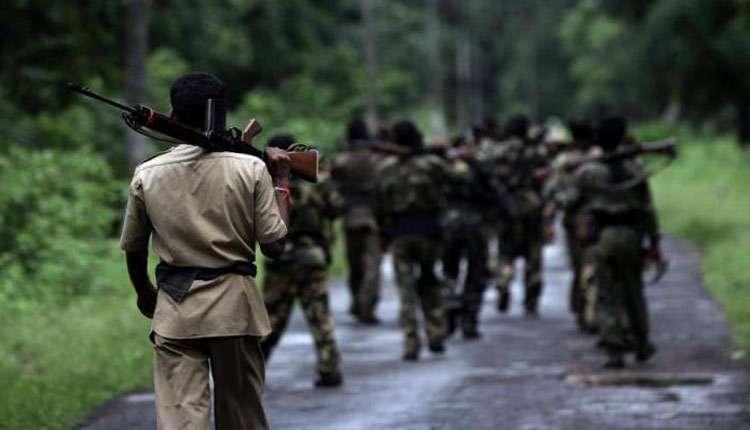
Visakhapatnam as AP capital can be sitting duck to Maoist strike

As Andhra Pradesh government is all set to move its executive capital to the port city of Visakhapatnam, the state police have raised a red flag. Since Visakhapatnam district is part of the Andhra-Odisha Border (AOB) zone where Maoists are quite active, there are growing concerns over security, especially to high-profile political leaders.
“Once Vizag becomes the administrative capital, there is bound to be a heavy presence of high-profile political leaders. This increases the security risk. The proximity to the AOB area is certainly a matter of concern,” a source in the state intelligence department said.
It would be easy for Maoists to make a quick retreat after a guerrilla attack, the officer said.
Also read | It’s official, end of Amaravati dream for Andhra Pradesh
Over the past decade, naxalites have been largely driven out from both Telangana, the original stronghold of the People’s War Group (PWG), and Andhra Pradesh. The AOB is now the sole territory of activity as access to Odisha provides them with a safe escape zone. Urban action teams of the outlawed CPI (Maoist) are known to be active in the AOB area and the presence of ministers in Visakhapatnam will keep the police constantly on tenterhooks.
In September 2018, Telugu Desam MLA Kidari Sarveswara Rao and a former legislator Siveri Soma was shot dead by Maoists in the Araku valley area of Visakhapatnam district.
Recently, an explosives dump of Maoists containing gelatin sticks and equipment for manufacture of firearms was unearthed in a forest area in the neighbouring East Godavari district.
Also read | Jagan’s please-all 3-capital scheme: Tokenism or equitable development
There are fears that the Maoists could use the public anger against the mining activity in the tribal-dominated forest areas of Visakhapatnam and neighbouring districts to bounce back into reckoning. “Targeting high-profile leaders has been a known tactic of Naxalites to revive their presence,” a senior police official said.
Rise and fall of Maoists
In November 2010, the then Prime Minister Manmohan Singh had said that the Left Wing Extremist movement was the “biggest internal security threat” in India.
The formation of the People’s Liberation Guerrilla Army (PLGA), the military unit of the People’s War group, in 2000 had provided a thrust to the Maoist movement all over the country and the sudden surge in the spatial spread of the revolutionary movement led by the CPI-ML (People’s War) gradually resulted in the reunification of the revolutionary forces in the country.
Various naxal groups like Party Unity (PU) got merged with the PWG in the South and the CPI-ML united with the Maoist Communist Centre of India (MCCI) in the North. In September 2004, the PWG and the MCCI merged to form the CPI (Maoist), thereby bringing large swathes of territory under the influence of the revolutionary party. The reunification of revolutionary forces built an aura of invincibility around the Maoist party.
The merger had happened even as the PWG leadership was engaged in the first ever peace talks with the then Congress government in AP headed by late YS Rajasekhar Reddy. However, the talks had collapsed subsequently with the naxalite group alleging that the government was continuing with the fake encounters.
At the height of Naxalite movement in the combined Andhra Pradesh in early 1990s, the ultras virtually ran parallel administration in vast swathes of the backward Telangana region. Several political leaders and top police officials including former home minister A Madhav Reddy and former Speaker D Sripada Rao were gunned down by Naxalites.
The most audacious attack came in October 2003 when Naxalites targeted N Chandrababu Naidu, who was the Chief Minister of combined AP, near Tirupati. However, he survived the assassination attempt with minor injuries as his convoy was hit by claymore mine blast.
Also read | Jagan’s please-all 3-capital scheme: Tokenism or equitable development
Since then, there has been a steady decline in the Maoist activity following a massive crackdown by “Greyhounds”, an elite anti-Naxal force of the AP police. With the police gaining the upper hand and several top leaders being killed or surrendered, the Maoists have shifted their base to the border states of Chhattisgarh, Odisha and Maharashtra.
“The success has been achieved because of the two-pronged strategy adopted by us. It involved modernisation of the force to execute intelligence-led precision strikes and massive development in the remote areas particularly focusing on roads, infrastructure, communication, schools and hospitals,” a top official involved in the anti-Maoist operations said.
The gradual erosion of the ideological base had become a major hindrance to the revival of Maoist movement in the state.
Also read | Battle over Amaravati spills to the streets, Naidu’s convoy attacked
According to the latest official data on the Left Wing Extremism (LWE), the number of armed cadre of Maoist organisation has been reduced by half in the last two years. The Maoist party, which boasted a 6,000 strong armed cadre in 2017, now has 3,722 members.
“There is no fresh recruitment of the cadre in the party. The arms and ammunition supply have taken a hit and the cadre is now confined to pockets of Chhattisgarh, Jharkhand, Bihar and AOB,” a police official said.
The movement suffered a setback not just in Andhra Pradesh and Telangana but also in West Bengal, Bihar and Jharkhand with several senior leaders being killed in police encounters or surrendered.





